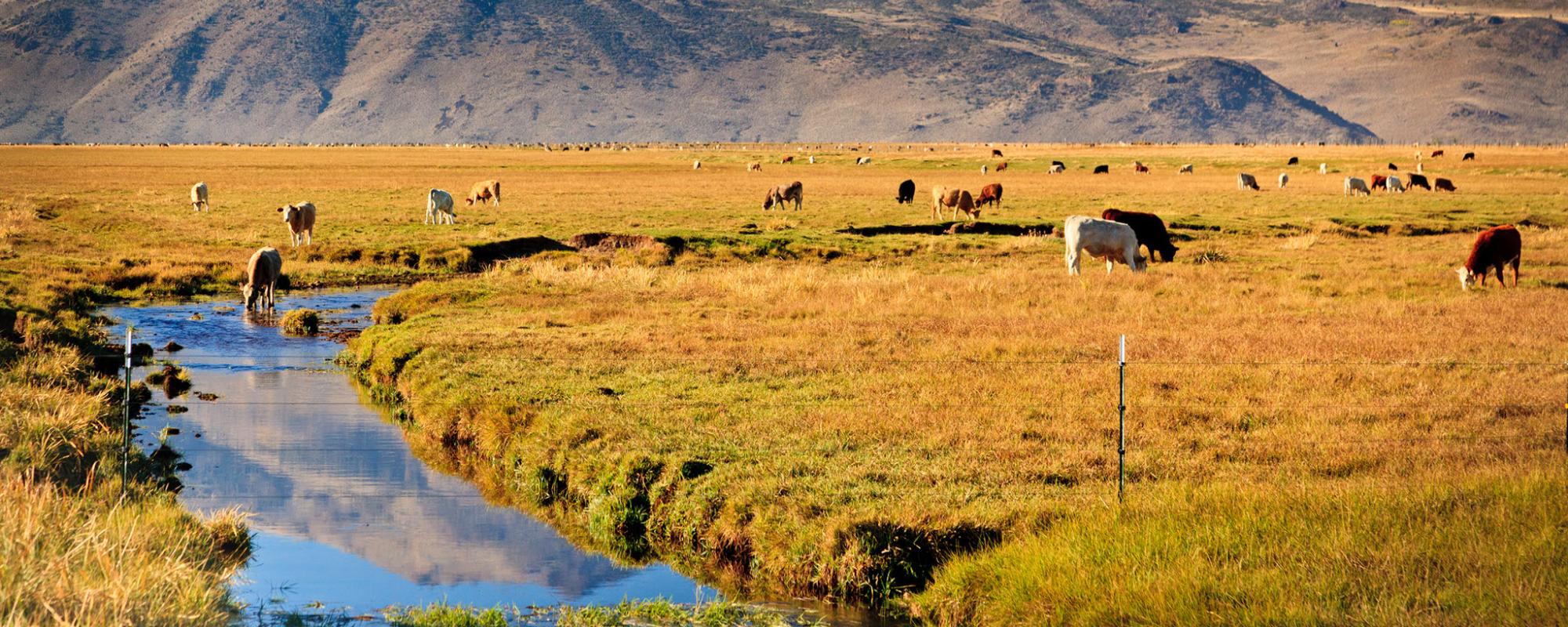California Water: A Rancher's Perspective
BATTLE OVER THE FUTURE OF WATER IN CALIFORNIA WAGES ON
Despite recent rains, California’s ag industry continues to suffer from the ongoing super drought. Debate rages on over implementation of Sustainable Groundwater Management (SGMA) and its impact on the state’s food supply.
At the heart of this debate is the Sacramento-San Joaquin River Delta, which we delved into earlier this year. Much has happened since then, but here’s a recap from the rancher’s perspective.
Farmers with access to groundwater have increased pumping to grow their crops. But the diminished water supply—and, for many, the lack of deep wells—has forced farmers and ranchers to fallow their land.
“SGMA is a devastating law that severely impacts crop irrigation,”the Western Agriculture Processing Association told the Department of Water Resources earlier this year. “This is the most important issue facing us today and coupled with the inability to build new water storage, restrictions on existing surface water deliveries in this third year of drought will cause fallowed acreage to skyrocket. And fallowed acreage means no farming and no jobs.”
Not only is SGMA restriction on groundwater an issue, but there is also a surface water crisis. According to Western Farm Press, the largest water district in the Sacramento Valley estimated water deliveries at less than 20% of what growers historically get. As a result, production is severely limited; for example, the amount of rice planted has dwindled from 100,000 acres in 2019 to as little as 875 acres this season. The situation is so dire that some ranchers and farmers have decided to break the law to save their land and livelihoods.
Leaders across the state met earlier this year to discuss the crisis and the various solutions that have been pitched to address the issue.
Gov. Gavin Newsom unveiled a plan in August to bolster the state’s water supply by recycling more water and expanding reservoir storage. He also proposed collecting more data on the amount of water farmers and ranchers use. The plan was criticized for having limited details and not enough deadlines and reductions for agriculture.
Seawater desalination continues to wax and wane as a potential solution, with The California Coastal Commission rejecting a plant in Huntington Beach, due to high costs and risks to marine life. But just months later, the commission greenlit a plant in Orange County.
Democrats in the state Senate also proposed using up to $1.5 billion to buy senior water rights from farmers and ranchers. Another bill would have added hurdles to obtain a permit to drill an agricultural well. However, neither of those bills passed.
“Continuing to go forward with this kind of heavy-handed approach is simply bringing the day closer when those million acres of agriculture are fallowed, and literally thousands upon thousands of farm workers will be unemployed,” Assemblymember Jim Patterson (R-Fresno) said in a statement. “The death knell of agriculture is but a few more votes like this away.”
Business and agricultural groups, including the California Chamber of Commerce and the California Farm Bureau Federation, opposed the bill, saying it would interfere with landowners’ rights to use groundwater and spur lawsuits over permitting decisions.
Environmental groups supported the bill, including the Natural Resources Defense Council, Sierra Club California and Community Water Center, saying groundwater depletion threatens drinking water supplies.
“We must drink. We must eat. We must keep our economic engine turning,” Clark said. “To do that, we must all ensure that agriculture’s interests are kept at the forefront of water policy, planning and debates.”

